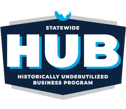In part 1, we talked about the basics of how to best communicate hazardous drugs safety information including making the guidelines accessible, searchable, and understandable. By ensuring these basics are covered you’ve drastically increased the chances that your healthcare workers will use the safety information and that their health and well-being will be protected.
Now we’ll take a look at what information should be included and how to ensure that information is organized and kept up-to-date.
DOES IT INCLUDE THE KEY INGREDIENTS OF USP <800>, OSHA, NIOSH AND SOURCED INFORMATION?
It may seem obvious that within an effective hazardous communications plan, you’d find the requirements for the regulations and regulating bodies who created the communications guidelines to begin with. However, pulling all of this information together in a way that is actually functional and improves employee health and safety can be a monumental challenge...we don’t have to tell you that though.
While your safety information must include the key ingredients of USP <800>, NIOSH and OSHA, how you store, present, and maintain this vital information is a plan in itself and often a full-time job. The effectiveness of your chosen communication method is 100% dependent on how accurate and easy it is to use. So not only is the information there (one box checked off the list), but is it updated (check), complete (check) and easy to navigate (check)?
IS THE INFORMATION ORGANIZED BY IMPORTANCE?
While there are many templates outlining the required hazardous drug safety information, they most likely do not reflect the way your organization uses this information on a daily basis. Of course, healthcare workers are going to find it much easier to follow safety guidelines if they can quickly and easily see what they need when they need it. Time is of the essence so your organization’s most important safety information needs to be front and center.
Many of our clients choose to organize their online hazardous communications plan with safety information pertaining to nurses at the top of the list. In these organizations, they’ve determined that nurses are their most frequent users of the info. In fact, a bonus component would be understanding who is using the safety information and how. Then you can be confident that your healthcare workers will use it and their health and safety will improve.
ARE YOU ACTIVELY MONITORING AND AUDITING YOUR DRUG LIST?
You’ve created your hazardous drug list according to NIOSH 2016 and 2020 (because we know you’re prepared for 2020 to become standard). What is your process for monitoring and auditing your organization’s list to ensure all drugs and most recent safety information is included? Do you conduct an annual review or monitor more frequently?
Even though NIOSH is the ruling authority on drug lists, the guidance is broad and open-ended when it comes to how and when to update an organization’s drug list. It goes without saying that a continually updated list with the latest safety information is key to ensuring the health and safety of all who come into contact with hazardous drugs.
IS IT CLEAR HOW PPE SHOULD BE DISPOSED OF?
We tend to be primarily concerned with the PPE needed when handling and administering hazardous drugs, but dangerous exposure can also occur when disposing of this PPE or the remaining drugs. It is imperative that guidance about how to safely dispose of used PPE and any excess drugs also be available at the point of care. Guidance must not only be available at the point of care, but it must be easy to understand whether in plain language or in visual cues such as images.
If you’ve checked off all of these key components, then you are effectively communicating to all the necessary healthcare workers in your organization the risks and safety precautions they need to be aware of in order to protect themselves from hazardous drugs exposure. If there are some areas you still need to work on, feel free to give the Rpharmy team a call and we can help. (800) 467-1907
If you’d like more information about the USP <800> PPE requirements, we’ve got a blog for you.


